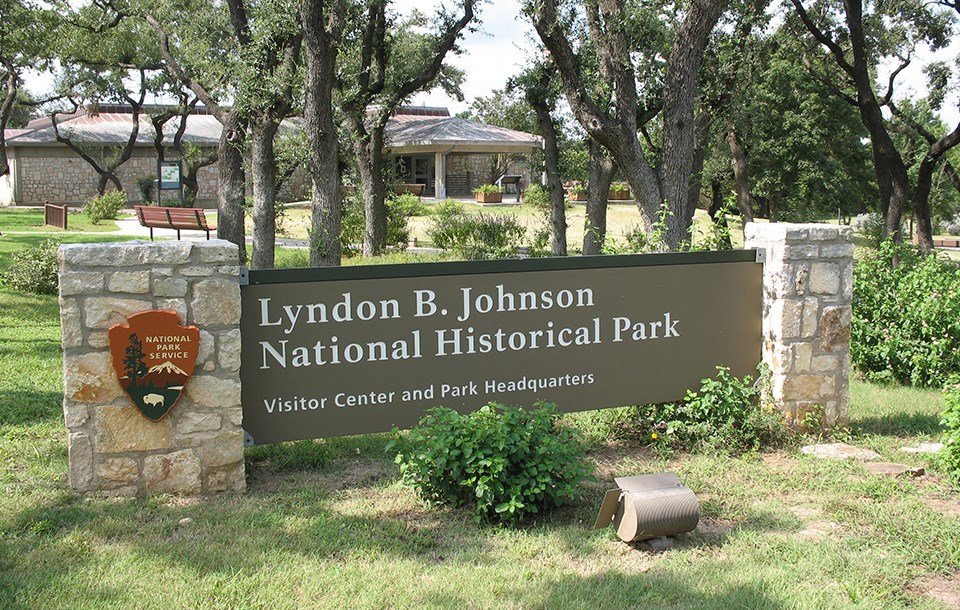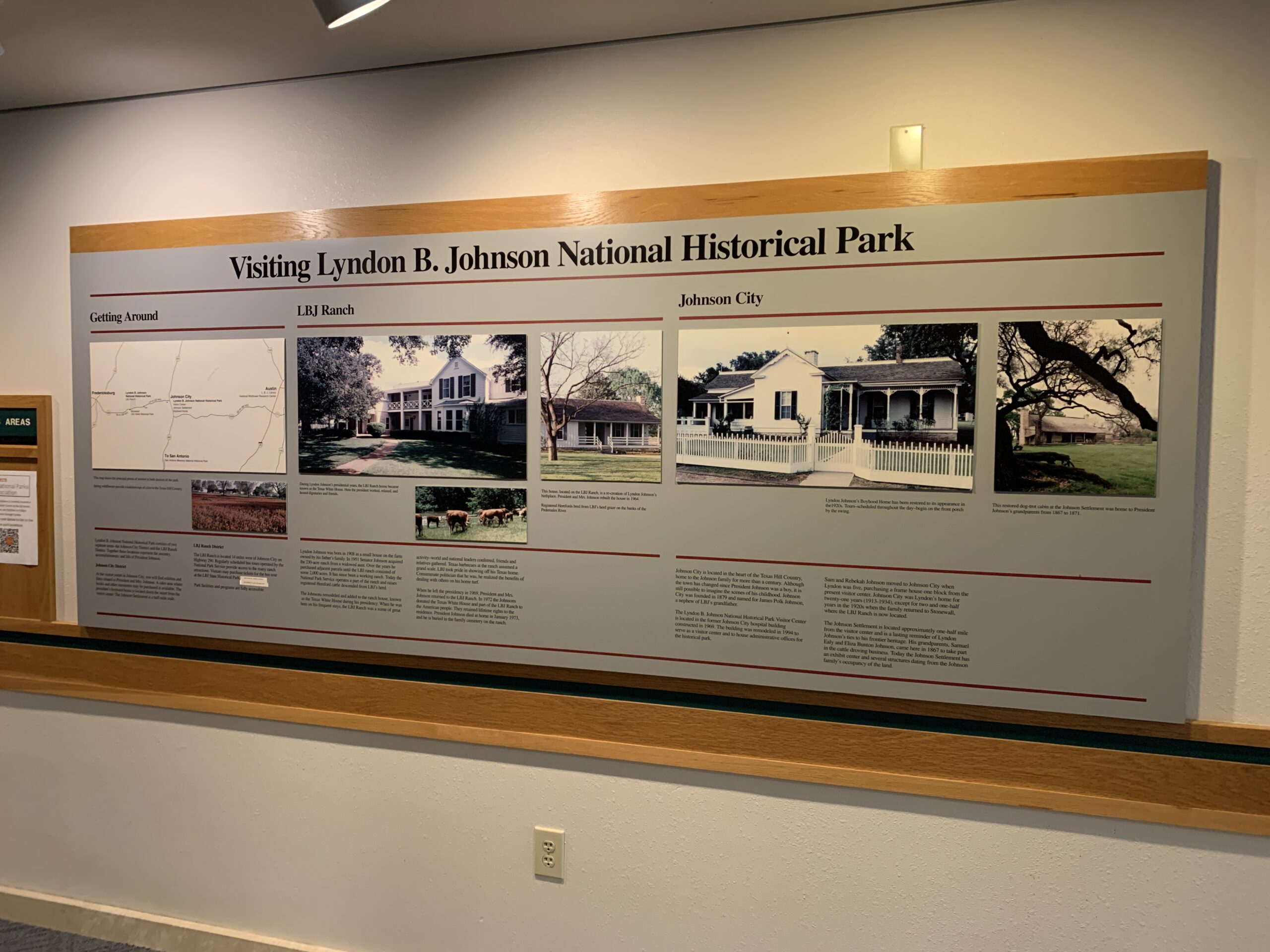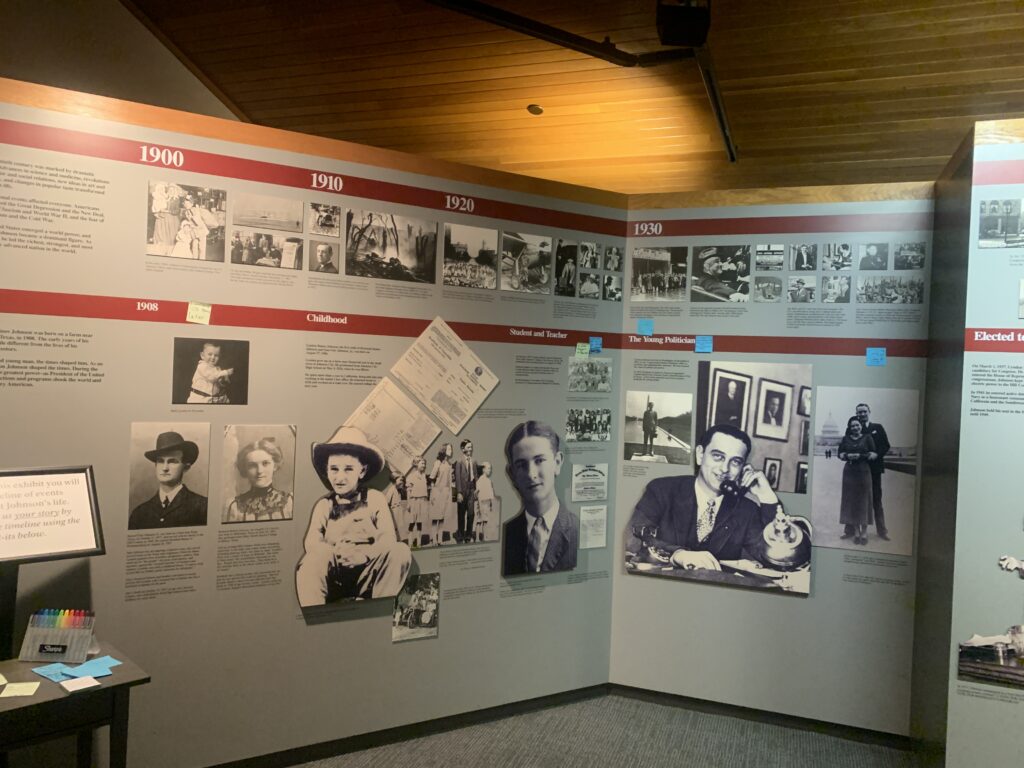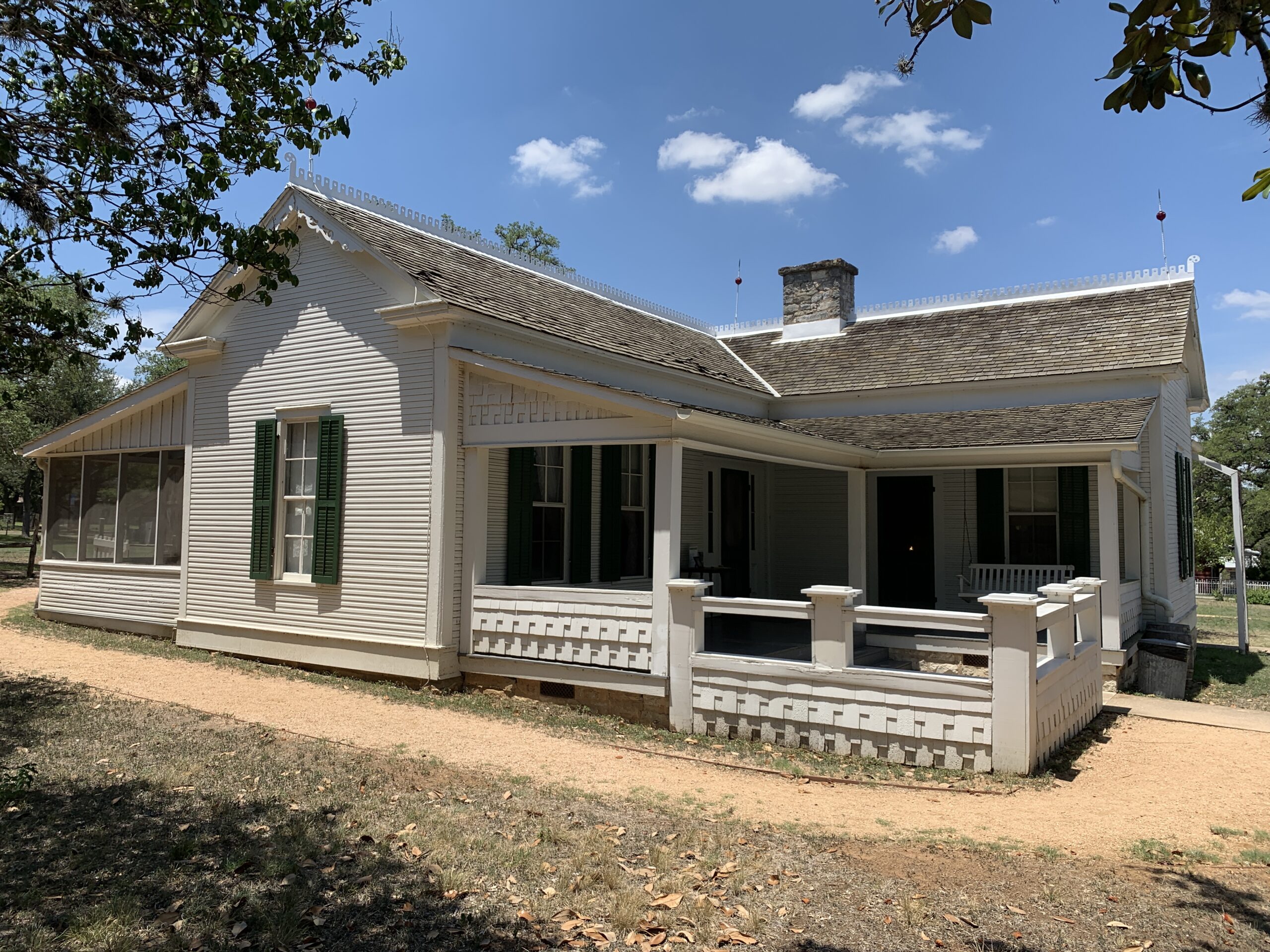The Lyndon B. Johnson Guest House and National Park Visitors Center, Event Center, and the LBJ National Park Ranch is a great place to visit and explore the history of LJB, his youth, his presidency, and his retirement while out exploring the Texas Hill Country. The Ranch is located in the East Texas Hill Country Town of Stonewall, TX and Visitor’s Center and Event Center in nearby Johnson City, TX. These combined National Park sites allow guests to visit the homes and accomplishments of President Lyndon B. Johnson.
Lyndon B. Johnson was the 36th president of the United States. He began his presidency starting on November 22, 1963, following the assassination of President Kennedy and ended on January 20, 1969. He had been Kennedy’s vice president for 1,036 days when he succeeded to the presidency.

The “Great Society” Domestic Agenda
He was known for his ambitious domestic agenda, often referred to as the “Great Society,” which aimed to combat poverty and promote civil rights. Here are seven of his top accomplishments:
Seven Top Accomplishments of LBJ’s Domestic Agenda
- Civil Rights Act of 1964: One of the most significant achievements of Johnson’s presidency was the passage of the Civil Rights Act in 1964. This landmark legislation outlawed racial segregation in public places and employment discrimination based on race, color, religion, sex, or national origin.
- Voting Rights Act of 1965: Johnson’s administration played a crucial role in passing the Voting Rights Act, which aimed to eliminate racial discrimination in voting. The act eliminated barriers that prevented African Americans from exercising their right to vote and was a pivotal moment in the civil rights movement.
- Medicare and Medicaid: President Johnson signed both Medicare and Medicaid into law in 1965 as part of his efforts to provide healthcare for elderly and low-income Americans. Medicare provided health insurance for seniors over 65, while Medicaid extended healthcare coverage to low-income individuals and families.
- War on Poverty: Johnson declared a “War on Poverty” in 1964, which led to the creation of several social programs aimed at alleviating poverty in America. These programs included Head Start, Job Corps, and the Food Stamp Act, among others.
- Elementary and Secondary Education Act: In 1965, Johnson signed the Elementary and Secondary Education Act into law, providing federal funding to improve educational opportunities and resources for disadvantaged students.
- Higher Education Act of 1965: This legislation expanded federal funding for higher education, making college more accessible to a broader range of students through scholarships, grants, and loans.
- Social Security Amendments of 1965: These amendments expanded Social Security benefits and established Medicare for older Americans, ensuring greater financial security and healthcare coverage for senior citizens.
Vietnam War Challenges
President Johnson’s domestic accomplishments were significant, however his presidency was marked by controversies and challenges, particularly related to the Vietnam War, which overshadowed some of his domestic achievements in the eyes of some historians and the public.
Lyndon B. Johnson National Park and Ranch
We took the 25 mile drive from the tiny House in Dripping Springs to the Lyndon B. Johnson National Historic Park Visitor Center and Park headquarters located in Johnson City. We then drove to the LBJ Event Center, then to the actual LBJ Presidential Ranch, close to Stonewall, TX, which is about 14 miles west of Johnson City.

Lyndon B. Johnson National Historical Park – Visitors Center and Park Headquarters
The LBJ National Historical Park Visitors Center and park headquarters was right in Johnson City, which is where LBJ grew up.


The Visitors Center and Museum
The Visitor’s Center had a walk-through museum that showed information all about LBJ’s career and even his childhood.




LBJ’s Boyhood Home
LBJ grew up here in Johnson City just a short walk across the street from the Visitor’s Center.





Johnson Settlement Event Center
This is the Johnson Settlement Event Center. It contains exhibits about pioneer life, cattle driving and ranching during the time of LBJs grandparents. It’s got some awesome looking Longhorn steers out there in the pasture. Events are held here as there is a small event center towards the back.



Lyndon B. Johnson National Historic Presidential Ranch
And next up, and by far the most fun and historical of the LBJ Ranch Guest House and National Park area is the National Historic Presidential Ranch, which encompasses over 700 acres.

Crossing the River
In LBJ’s days, to get to the ranch, you had to cross the Pedernales River. His preferred method was to use this road that cross the river. There’s still a real low bridge going across the river. Unfortunately, we have to use a real bridge to cross the river rather than this “shortcut”.


Sauer-Beckman Living History Farm
This is the Sauer-Beckman Living History Farm and well worth the time to explore the old homestead days and their livestock.


Experience life in the historic Farm where Park rangers wearing historical clothing work to farm daily chores, caring for animals, feeding, milking, gathering eggs, slopping hogs. Inside the house, cooking, cleaning, and churning needs to be done. You may see family members weeding the garden, working in a blacksmith shop or knitting. Seasonal chores include canning and butchering.
The Rangers job is to give an overall experience of life at the homestead. It was extremely hot while we visited so the Rangers were probably indoors cooling off!






They really have a nice traditional garden to boot.

LBJ’s Pecan Orchard
LBJ also had a nice pecan orchard, as you see here.

LBJ was a successful rancher and one time having over 400 heads of Harford cattle on his ranch.


Airport Hanger
Air Force One-Half
A jet star, on display, was the plane that flew in and out of President Johnson’s ranch. There was, and still is, a working runway spanning the middle of the Ranch.

The Lockheed plane is sometimes referred to as Air Force one/half, and the runway is still considered an operating runway as the family still has the rights to use it and I guess occasionally do.


Airplane Hanger Visitor Center
The Airplane Hangar Visitor Center serves as the information station for the LBJ Ranch District.



Numerous exhibit areas include displays on life and work at the ranch, Lady Bird Johnson and on the space race. And hey, it even has a podium that we got to act like we were presidents giving a speech.


Military and Communications Headquarters
This is the military and communications headquarters (green trailer).
Lyndon B. Johnson’s Ranch House
And of course then we got to see the actual house and you can see a little fawn out in the area there.

President Johnson’s ranch house is as you can see, pretty nice. There were no tours of the house unfortunately at this time due to structural issues.

President Lyndon B. Johnson grew up in Johnson City and became our 36th President. The LBJ National Park Visitors Center, the Johnson Settlement Event Center and Ranch does a great job of celebrating all the accomplishments he had as he was a young lad and his course through politics to reaching the Presidency. If you are in the Texas Hill Country, LBJ Ranch Guest House and National Park should be right on the top of your visit list!
If you like this post, make sure you check out the Beautiful Pedernales Falls State Park post. This is very close and well worth visiting as well. The post has a number of beautiful pictures that you should enjoy!!! While you’re at it, check out our YouTube travel channel at Travel with D and E on YouTube, and specifically our videos covering our trip to the Texas Hill Country with LBJ’s National Park and the Beautiful Pedernales Falls State Park on the Fun Things to Do in Dripping Springs, TX video.

Leave a Reply